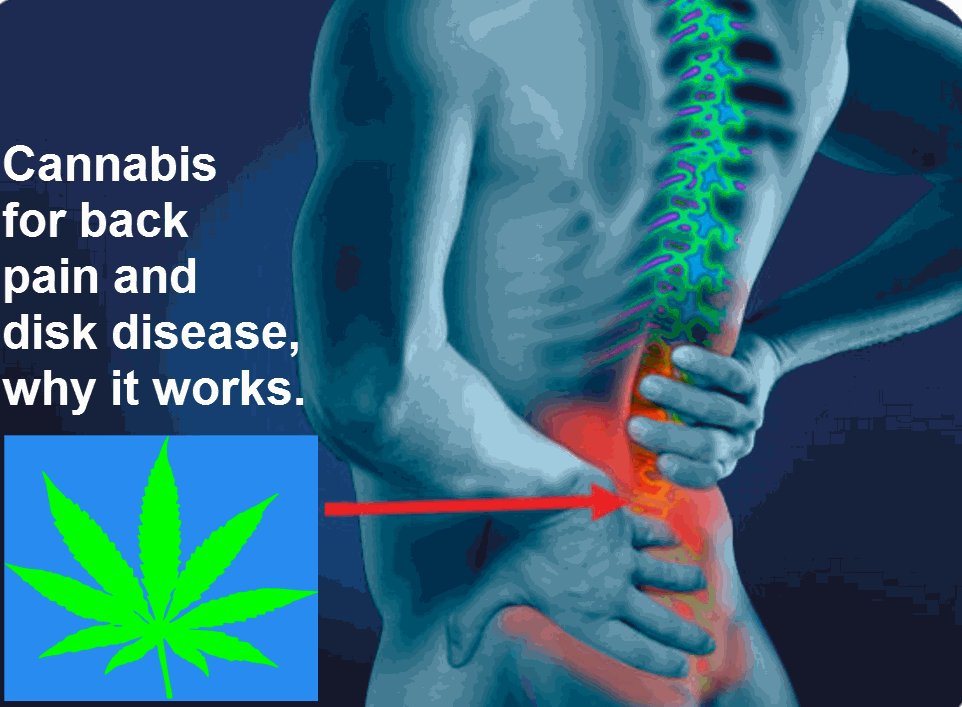Cannabis For Lower Back Pain From Big Pharma
How Does Cannabis Help with Lower Back Pain ? (L3, L4, L5, etc) from CannabisNet on Vimeo.
Over 31 million Americans suffer from lower back pain. The 2010 Global Burden of Disease states that lower back pain is the leading cause of disability worldwide, and it’s also one of the most common reasons people skip work.
Americans spend more than $50 billion each year on back pain alone. According to experts, an estimated 80% of the population will go through back pain at some point in their lives. Chronic lower back pain is a serious problem affecting not just America, but the rest of the world.
Cannabis.net spoke with Dr. Ascher Shmulewitz, MD, PhD; CEO of Therapix Biosciences, a biopharmaceutical company focused on developing therapeutic medications based on proprietary cannabinoids. Therapix Biosciences has just recently received clearance from the FDA for its THX-110 for the treatment of chronic low back pain.
Please tell us more about THX-110. What is the dosage like, and how often do you expect patients to take it once it's available?
Our proprietary THX-110 drug candidate takes a unique approach to the treatment of Tourette’s Syndrome, Obstructive Sleep Apnea (OSA), and pain. THX-110 is a combination based on two components - THC and PEA, which we believe may induce a reaction known as the “entourage effect” A term coined by Prof. Raphael Mechoulam, who discovered THC, who’s a pioneer in cannabis research (known as ‘the grandfather of cannabis’) and is on our scientific board.
THX-110 contains: (1) Dronabinol, the active ingredient in an FDA approved synthetic analog of tetrahydrocannabinol, or THC, which is the psychoactive molecule in the cannabis plant, and (2) palmitoylethanolamide, or PEA, which is an endogenous fatty acid and exists in egg yolks for example. This entourage effect may account for the pharmacological actions of PEA. Based on an activity enhancement of other physiological compounds, PEA may indirectly stimulate the cannabinoid receptors by potentiating their affinity for a receptor or by inhibiting their metabolic degradation, and by doing so, may increase the uptake of cannabinoid compounds, such as THC. Thus, we believe that the presence of the PEA molecule likely increases the efficacy of orally administered THC, while reducing the required dosage and decreasing associated deleterious adverse events. Our patients consume a dose between of 2.5 mg – 10 mg THC per day (according to severity of their medical condition), and 800mg PEA, taken orally together daily.
How does THX-110 differ from other synthetic cannabis-based products on the market now? For example, Dronabinol has been known to give some patients side effects including weakness, palpitations, and anxiety to name a few.
Dronabinol is a generic name for THC synthesized in a lab. THC could induce side effects like nausea, palpitations, anxiety and more, regardless of its source. Once Prof. Raphael Mechoulam was asked in a cannabis conference: What is better? Botanical cannabinoids or synthetics?” His answer was: “It doesn’t matter as long as you do it right”. That being said, there is a difference between Dronabinol and THX-110, as according to the entourage theory and based on pre-clinical studies we performed in THX-110, PEA potentiates the activity of THC, initiates the effects faster and for a longer duration, as well as, reduces side effects. In addition, the combination of THC with PEA showed a significant reduction in THC dosage required. Meaning, In THX-110, using PEA and the entourage effect on THC, a lower dose of THC provides the same effect as a higher dose Dronabinol, but with less side-effects.
Can you tell us more about Palmitoylethanolamide (PEA) and how it works with Dronabinol to address chronic pain?
In addition to above answers: PEA was discovered at the NIH in the 50s and was developed into a drug in the Czech Republic. It has been used as a drug or supplement in Europe for many years but was never approved in the US. Mechoulam discovered the endocannabinoid system in 1998 and described the entourage effect of PEA on the body’s equivalent of THC, AEA. Cannabinoids seem to reduce the hyperalgesia in the brain, the leading cause of chronic pain. A high level of PEA is essential to down-regulate this effect. Moreover, the evidence of negative effects from opioid use is accumulating, and epidemiological studies of long-term opioid use have also yielded overwhelming evidence regarding the risks of opioid misuse and abuse, including: high death rates, high fracture rates, high rates of cognitive dysfunction, and high rates of abuse, particularly in patients who obtain high doses.
THX-110 has a potential sparing effects - it reduces the dose and frequency of consuming the use of other drugs, and especially opiates for the treatment of chronic pain.
About the trial: A 10-week, open label trial of a therapeutic combination THX-110 in 20 adults with chronic low back pain. Subjects will receive THX-110 for 6 weeks. Our goal for this pilot study is to (1) evaluate the clinical benefit of once-daily application of THX-110 in reducing pain in adults suffering from Chronic Low Back Pain compared to baseline at 6 weeks following baseline visit. and (2) demonstrate safety and tolerability of THX-110 (study drug) as well as to evaluate the benefit of THX-110 on improvement of quality of life outcomes as measured by SF-36 (Short Form Health Survey), EQ-5D (European Quality of Life 5 Dimensions) and ODI (Oswestry Disability Index).
What were the challenges you faced in receiving clearance/approval from the FDA?
As a matter of fact, the FDA is very supportive of the approach we have taken. In addition, Pharmaceutical grade THC has been approved previously, and PEA has a very safe profile. Moreover, we also had very solid data from the phase IIa clinical trial in Tourette’s syndrome conducted in Yale University, with THX-110; its results will be published shortly.
When do you foresee THX-110 being available to the American public? Can you tell us more about THX-TS01 for Tourette's syndrome?
We are entering phase IIb study using THX-110 for Tourette’s Syndrome in Germany, anticipated to begin at the end of second quarter 2018. We believe it will be available to public not before 2020, as we continue according to FDA regulatory pathway to get THX-110 approved as safe and effective drug to the patients, who suffer substantially due to their unmet need.
About Dr. Ascher Schmulewitz, MD, PhD
Interim Chief Executive Officer, Therapix Biosciences Ltd.
With doctorate degrees in medicine and engineering, Dr. Ascher Shmulewitz has spent much of his career as a successful inventor, investor and serial entrepreneur in the biomedical technologies field, facilitating a wide range of corporate collaborations. He is the interim CEO of Therapix Biosciences Lt. and was the Chairman of Therapix’s Board of Directors since January 2014 and has also served as a Board member since February 2013. Dr. Shmulewitz founded and invested in over twenty-four life science companies – many of which enjoyed successful exits via merger & acquisition transactions with large medical device companies – including Arteria Corp., Circulation Inc., Labcoat Medical Ltd., NeoVision Corp, and X-Cardia Inc. In 1995, Dr. Shmulewitz co-founded San Francisco Science and the Incumed Group which both provide seed funding to promising companies. He also founded the private Israeli investment firm and incubator Medgenesis Partners Ltd. which has invested in over a dozen ventures. Between 1988 and 1992, Dr. Shmulewitz held senior executive positions at Advanced Technology Laboratories Inc.. He received his M.D. from The Technion Medical School, and a Ph.D. in Engineering from Tel Aviv University, Israel.
Marijuana For Lower Back Pain From Big Pharma? Is It True? from CannabisNet on Vimeo.
OTHER STORIES YOU MAY ENJOY...
CANNABIS FOR LOWER BACK PAIN, READ THIS, CLICK HERE.







